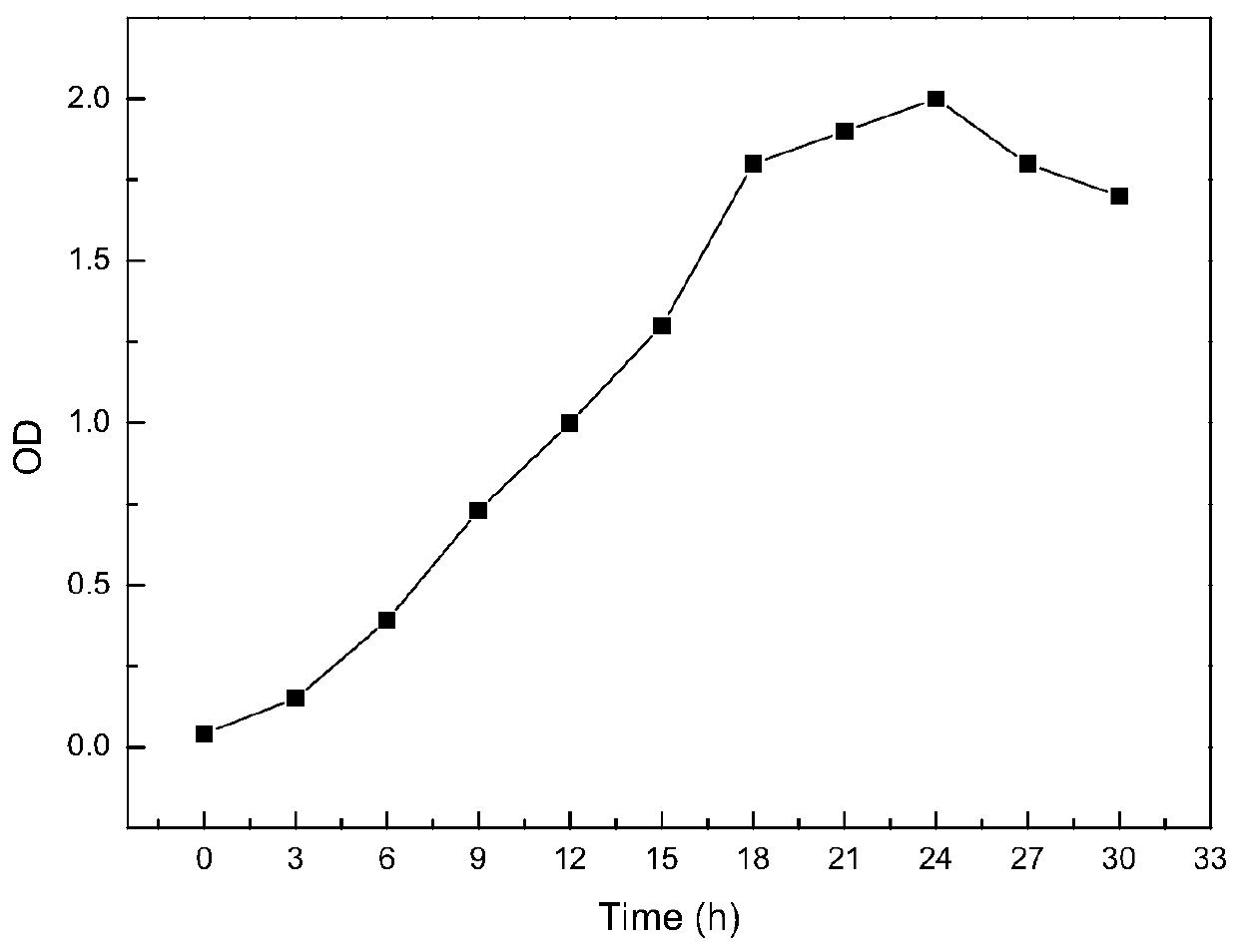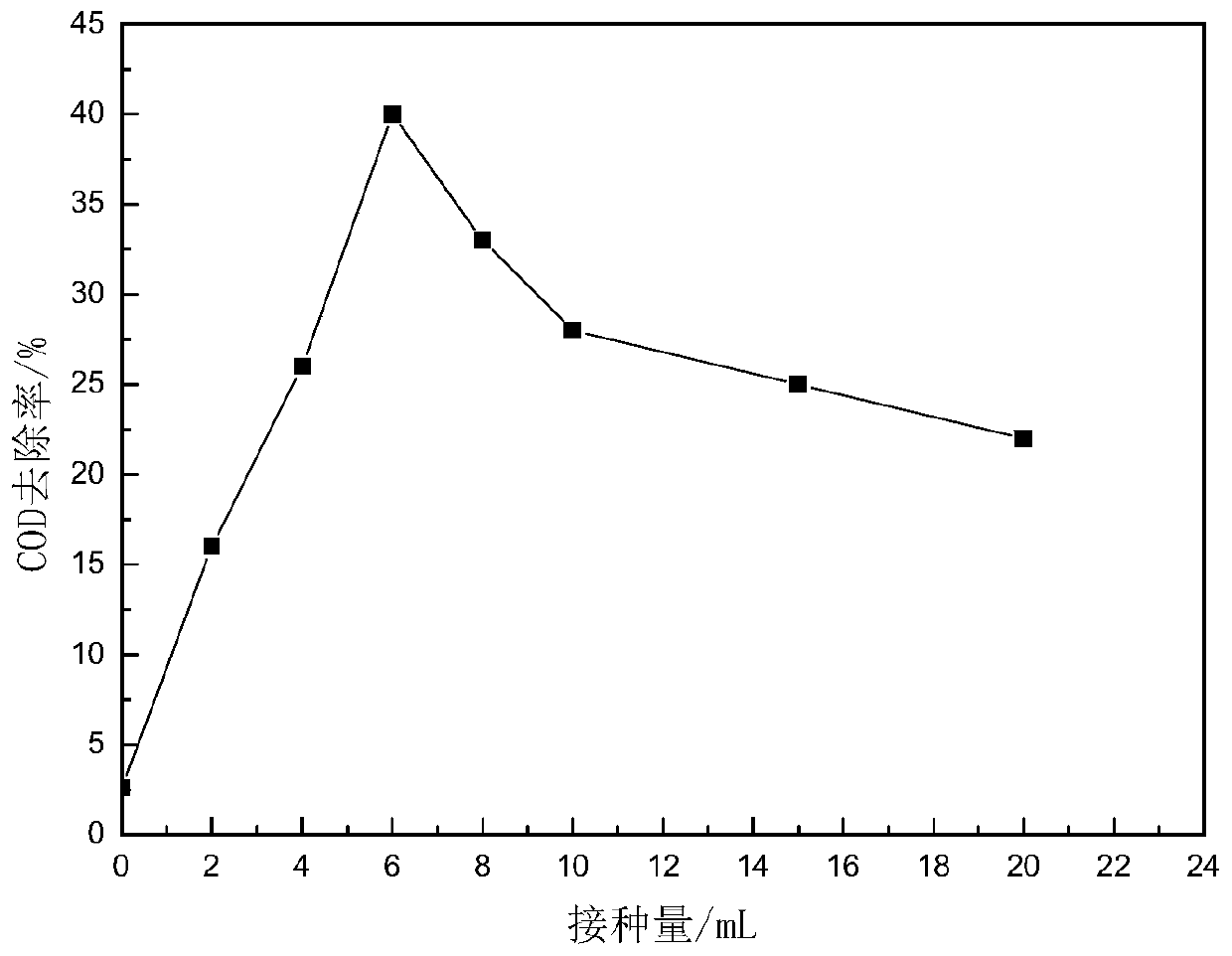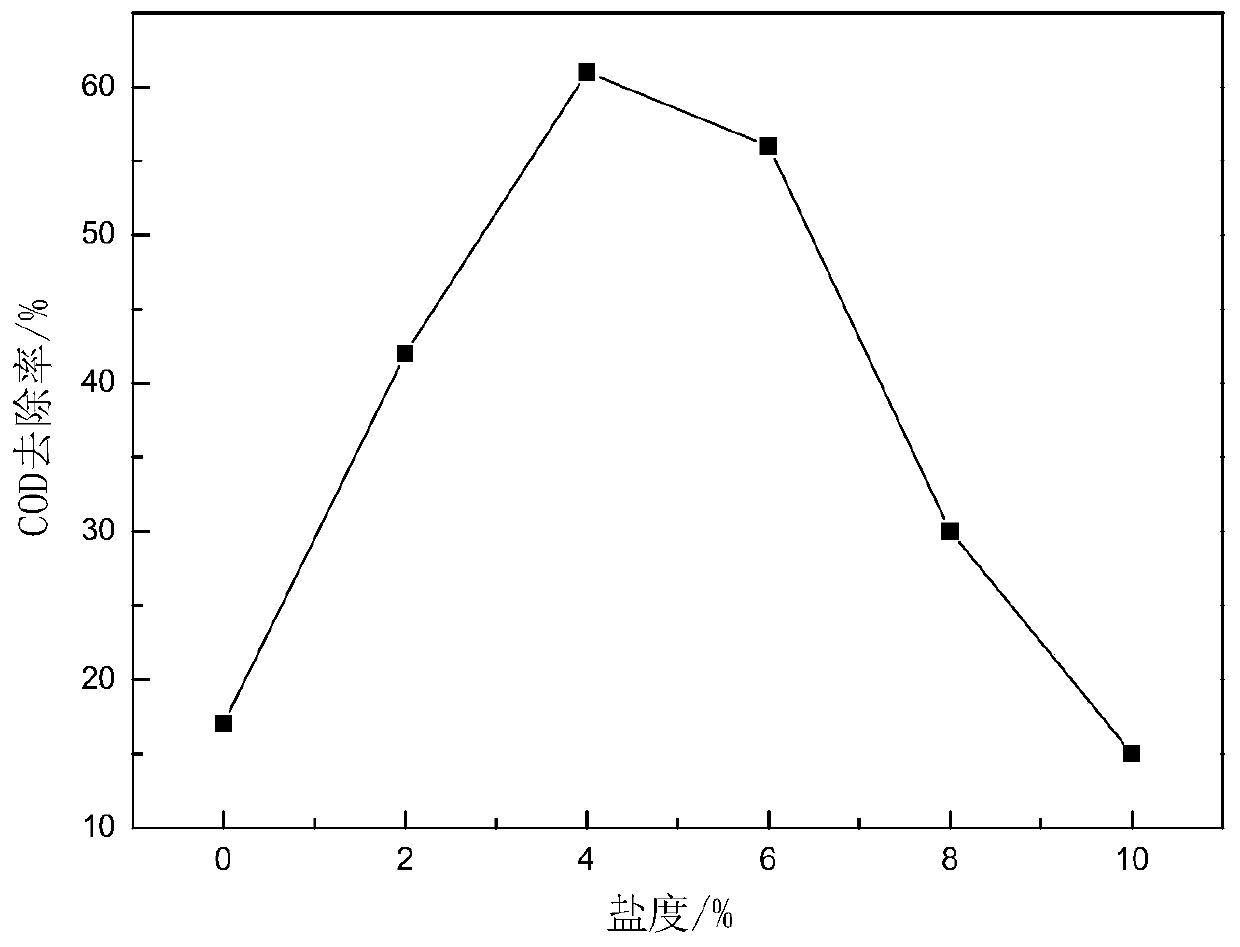Wastewater degrading bacterial strain against high salts and high COD, cultivation method, bacterial solution and application
A technology for degrading wastewater and degrading bacteria, applied in chemical instruments and methods, methods based on microorganisms, methods using microorganisms, etc., can solve problems such as aggravating fresh water, increasing treatment costs, and microbial death, and achieve the effect of improving screening efficiency
- Summary
- Abstract
- Description
- Claims
- Application Information
AI Technical Summary
Problems solved by technology
Method used
Image
Examples
Embodiment 1
[0038] The domestication and screening steps of wastewater-degrading bacterial strains resistant to high salt and high COD are as follows:
[0039] (1) Sludge was collected near the waste water outlet of Lucheng Tianji Coal Chemical Group Co., Ltd., Shanxi Province, and the sludge sample was inoculated on beef extract liquid medium with a sulfate concentration of 10 g / L at an inoculum volume of 5%. , enriched and cultured on a shaker at 30°C for 4 days to obtain a primary acclimatization culture medium;
[0040] (2) According to the inoculum amount of (1), inoculate the first-level domestication culture medium on the beef extract liquid medium with a sodium sulfate concentration of 20g / L, enrich and culture it on a shaker at 30°C for 4 days, and obtain the second-level domestication culture medium ;
[0041] (3) According to the inoculum amount in (1), inoculate the previous-level acclimatization culture medium into the new beef extract liquid medium containing sodium sulfate...
Embodiment 2
[0045] Molecular biological identification of strains
[0046] After screening and domestication, the sodium sulfate-resistant strain was obtained, which was positive by Gram staining. When cultured on a plate, the colony was round, with a smooth surface and slightly raised, regular edges, and red color. Microscopic examination showed that the bacteria were spherical. It was identified as Rhodococcus erythropolis by 16S rRNA ( Rhodococcus erythropolis ), name it Rhodococcus erythropolis. HQC-1, the conditions for strain survival and growth and reproduction are temperature 20-55°C, pH 6.0-8.0. See the appendix for the sequence list in the 16rRNA identification of the strain of the present invention.
Embodiment 3
[0048] Rhodococcus erythropolis. The cultivation method of HQC-1
[0049] The above-mentioned isolated strains were cultured in beef extract liquid medium, which consisted of: 0.3% beef extract; 1.0% peptone; 0.5% sodium chloride; 0.1% potassium dihydrogen phosphate; 0.05% magnesium sulfate; pH 7.2, OD of the strain 600 Trends over time (i.e. growth curves of strains) such as figure 1 As shown, in the process of cultivating for 30 hours, it was found that the growth trend of the strain was better in the period of 6-18 hours. Therefore, the corresponding OD 600 The bacterial solution with a value of 0.4-1.8 is a bacterial solution, and the effective viable bacterial content can be obtained ≧2×10 9 individual / mL.
PUM
 Login to View More
Login to View More Abstract
Description
Claims
Application Information
 Login to View More
Login to View More - R&D
- Intellectual Property
- Life Sciences
- Materials
- Tech Scout
- Unparalleled Data Quality
- Higher Quality Content
- 60% Fewer Hallucinations
Browse by: Latest US Patents, China's latest patents, Technical Efficacy Thesaurus, Application Domain, Technology Topic, Popular Technical Reports.
© 2025 PatSnap. All rights reserved.Legal|Privacy policy|Modern Slavery Act Transparency Statement|Sitemap|About US| Contact US: help@patsnap.com



